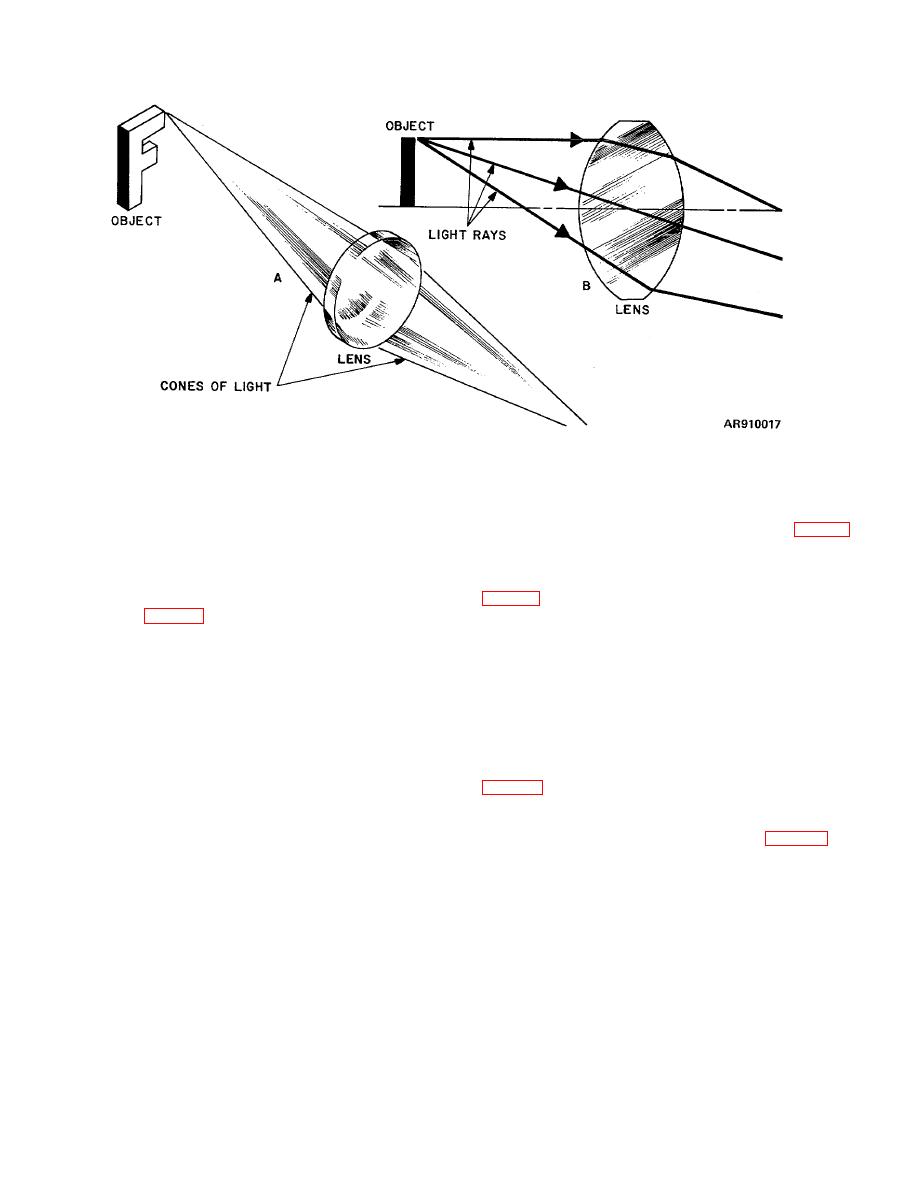 |
|||
|
|
|||
|
Page Title:
Figure 2-11. Symbols and types of illustrations used in this manual. |
|
||
| ||||||||||
|
|
 TM 9-258
Figure 2-11. Symbols and types of illustrations used in this manual.
b. Single rays of light do not exist. The term "light
from a luminous or illuminated point, these lightrays
indicate a solid cone of light from that point (A, fig 2-11).
ray" is used throughout this manual for the sake of clarity
In certain of the illustrations, an attempt has been made
and convenience to indicate the direction of travel of
to simulate height, width, and depth by preparing the
light.
c. In studying the diagrams, it must be
diagrams to appear as though viewed from an angle (A,
remembered that printed illustrations have only height
d. The letter F is used as the object in a great many
and width (b, fig 2-11) while everything, including light,
of the diagrams because it shows quickly whether the
has three dimensions: height, width, and depth (or
image of this letter or object is upright, inverted, or
length). The reader's imagination must be employed to
reverted.
give the illustration depth. Thus, for example, where two
light rays are used to indicate the course of light
Section II. REFLECTION
directed back along the path of the incoming beam (A,
2-5.
Reflection From a Plane Mirror.
a. A plane mirror is a flat polished surface used to
position, the reflected beam will be shifted at an angle
reflect light. If a beam of light is permitted to enter a
from the incoming beam that is twice as great as the
darkened room and a plane mirror is held so that the
angle by which the mirror is shifted (B, fig 2-12). For
beam will strike the mirror, the beam will be reflected. By
example, if the mirror is held at angle of 45 to the
shifting the mirror, the beam can be reflected to almost
incoming beam, the reflected beam will be projected at
any part of the room.
an angle of 90 to the incoming beam.
b. If the mirror is shifted so that it is exactly at right
angles (normal) to the beam, the reflected beam will be
2-9
|
|
Privacy Statement - Press Release - Copyright Information. - Contact Us |